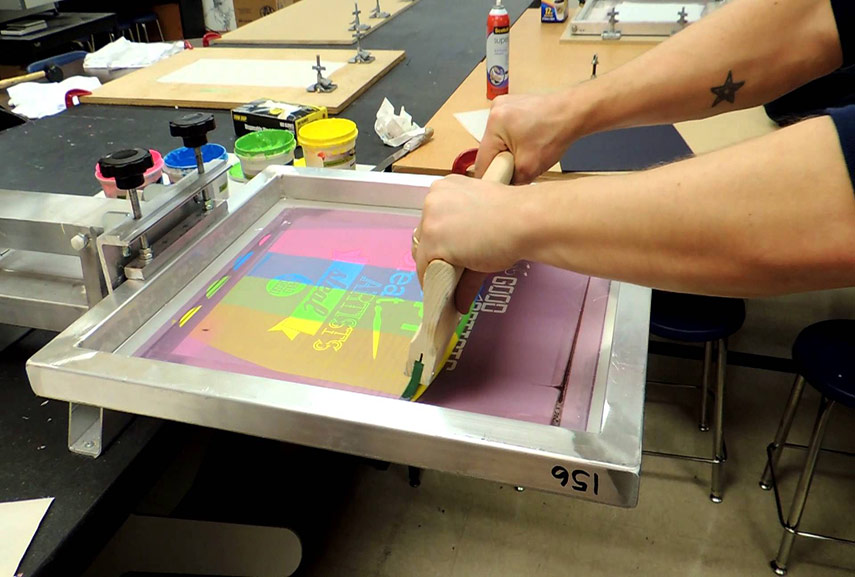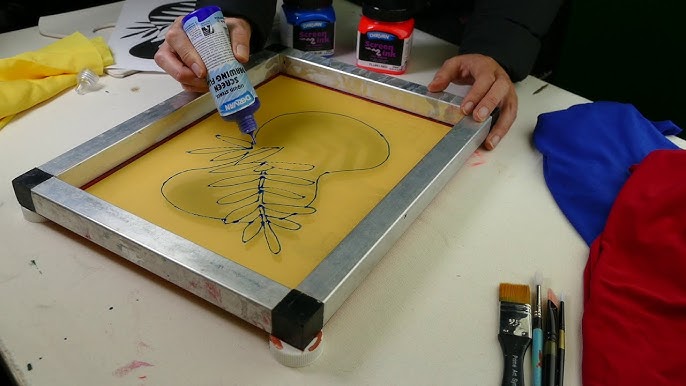ChatGPT said: 10:9 Design Embroidery success stories: how clients boosted their brand identity
The Necessary Guide to Recognizing Screen Printing and Its Versatile Makes use of
Screen printing has an abundant history that dates back to ancient times, evolving right into an innovative strategy made use of throughout various sectors today. This overview discovers the ins and outs of the screen printing process, describing its applications in fashion, advertising, and home design - 10:9 Design Screen Printing. Understanding these basics can open up creative possibility for both industrial and creative jobs. The following areas will disclose crucial suggestions and strategies to enhance one's screen printing ventures
The Background of Screen Printing
Screen printing has origins that trace back centuries, its development reflects the technical and artistic improvements of various societies. Coming from old China, the technique was at first used for embellishing fabrics and later infect Japan, where it came to be essential to Ukiyo-e woodblock printing. The method shifted to Europe in the 18th century, where it got appeal among craftsmens and business printers. The invention of photo solution in the 20th century transformed screen printing, permitting more complex layouts and greater effectiveness. Musicians like Andy Warhol further drove its popularity, using the medium to create iconic works that mixed commercialism and art. By the late 20th century, screen printing had established itself as a flexible strategy, employed in style, marketing, and art. Today, it proceeds to advance, integrating digital modern technology and broadening its applications across various markets.
The Screen Printing Process Explained
Screen printing changes creative visions right into substantial designs with a series of accurate actions. Initially, a picture is produced and then transferred onto a screen, usually made of fine mesh fabric stretched over a frame. A light-sensitive solution is put on the screen, which is revealed to light, hardening in areas not covered by the picture. After cleaning out the unhardened solution, a pattern is created.
Next, the screen is placed over the substrate, whether it be fabric, paper, or another material. Ink is then pushed via the open areas of the pattern using a squeegee, transferring the style onto the substrate listed below. This procedure can be repeated for several colors, calling for separate displays for every color. The printed thing is cured making use of warm to assure the ink sticks correctly, resulting in a sturdy, dynamic style prepared for usage.
Sorts Of Screen Printing Techniques

Additionally, specialized strategies, such as discharge screen printing, remove dye from the textile to produce softer prints, while aluminum foil screen printing uses metallic foil to accomplish a shiny finish (10:9 Design Screen Printing). Each strategy provides distinctive qualities, satisfying various imaginative demands and production ranges, inevitably broadening the possibilities within the screen printing domain name
Applications of Screen Printing in Various Industries

In addition, the signage and advertising and marketing sectors use screen printing for developing captivating screens and banners. This method enables vibrant colors and elaborate designs that catch attention. In electronic devices, screen printing is utilized for applying conductive inks to her comment is here circuit boards, essential for part connections. The home design sector embraces screen printing to produce distinct styles on fabrics and wall art. Overall, screen printing works as a vital device across varied fields, boosting items with personalized and visually attractive graphics.
Tips for Effective Screen Printing Projects
While taking on a screen printing task, cautious interest to detail can substantially boost the final result. Picking high-quality materials is important; this includes the screen, inks, and substrates. Utilizing proper mesh matters can impact ink deposition and information resolution. Prep work is just as vital; thorough cleansing of displays and appropriate exposure times guarantee crisp prints.
Next off, accurate registration is critical for multi-color prints. Using alignment devices can assist achieve exact layering. Furthermore, testing prints on scrap materials prior to manufacturing aids determine prospective issues without throwing away sources.

Often Asked Inquiries
What Materials Are Best for Screen Printing on Fabric?
Cotton and polyester blends are ideal for screen printing on textile because of their sturdiness and ink absorption. In addition, specialty materials like silk or canvas can produce distinct appearances and finishes, improving the overall layout top quality.
Exactly how Do I Clean and Maintain Screen Printing Devices?
To keep and cleanse screen printing tools, one ought to regularly wash displays with appropriate solvents, evaluate mops for wear, oil relocating components, and store all items in a completely dry, dust-free setting to lengthen their lifespan.
What Are the Ecological Influences of Screen Printing?
Screen printing can have considerable ecological impacts, consisting of chemical waste from solvents and inks, water usage throughout cleansing processes, and energy intake. Lasting methods and environment-friendly materials custom paper signs are crucial for lessening these unfavorable effects.
Can Screen Printing Be Done in the house Successfully?
Screen printing can be efficiently done at home with the appropriate products and techniques. Enthusiasts can produce top quality prints, though success depends upon their skill level, tools, and understanding of the process included.
What Are the Costs Linked With Starting a Display Printing Service?

Starting a screen printing service entails costs for devices, materials, and office. First expenditures usually vary from a few hundred to several thousand dollars, relying on the range, quality of machinery, and desired production capability.
Screen printing has an abundant background that dates back to old times, evolving into an advanced method sign print shop made use of across numerous industries today. One more technique, rotary screen printing, uses cylindrical displays, helping with continuous printing on textile rolls, consequently boosting efficiency for large-scale productions. Additionally, specialty strategies, such as discharge screen printing, remove dye from the textile to develop softer prints, while aluminum foil screen printing uses metal aluminum foil to attain a glossy surface. In the fashion field, screen printing is widely utilized to create vivid designs on apparel, making it possible for brand names to showcase their distinct styles. Cotton and polyester blends are perfect for screen printing on fabric due to their durability and ink absorption.